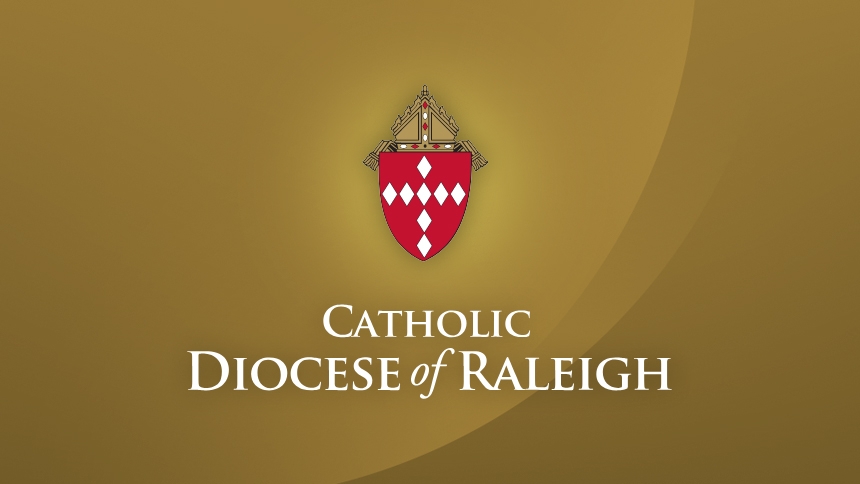
Ver en español (PDF)
The Diocese of Raleigh continues to actively monitor the emerging coronavirus issue and looks to the U.S. Centers for Disease Control and Prevention (CDC) local health officials regarding guidance to prevent its spread.
While no diocesan-wide measures are being advised at this time, pastors may certainly deem appropriate a number of additional precautions. In particular, two elements of the Eucharistic Liturgy which might concern many of the faithful at this time are the gestures used during the exchange of the Sign of Peace and receiving the Blood of Christ from the chalice during Communion.
On behalf of Bishop Zarama, we offer some clarity on these practices to ease the consciences and devotion of the faithful.
Sign of Peace
In the Eucharistic Liturgy (the Mass) after saying, “The peace of the Lord be with you always,” and the assembly’s response, “And with your Spirit,” the presider says to the assembly, “Let us offer each other the sign of peace.” The necessary greeting of peace to one another before we receive the Body and Blood of Christ prepares us to be fully and wholly attuned to receiving the great gift of Christ in this Sacrament.
There is nothing mentioned in the Roman Missal that says this sign must be a handshake or a kiss or any other type of physical contact. The handshake during this time is primarily a Western, and more explicitly, an American custom. In other cultures, a bow or nod of the head with the greeting, “Peace be with you,” or “Peace to you,” fulfills the request of the presider. It is not necessary, nor was it ever necessary, to shake hands to express the sense of greeting one another with peace.
Receiving the Blood of Christ from the Chalice
In the Eucharistic Liturgy, the faithful are invited to the Table of the Lamb to receive the risen Lord integrally under the forms of bread and wine. In 1415, the Council of Constance declared that Christ is fully present in each element of the Eucharistic Sacrament because no part of Christ’s substance (the body and blood, together with the soul and divinity) can be divided.
Receiving from the chalice, while encouraged, is a choice. And while it is a profound expression of our solidarity with one another in faith as the Body of Christ, choosing not to receive from the chalice is neither a denial of Christ’s presence in the Precious Blood, nor is it somehow offensive to God or to the community. Anyone who has a cold or other sickness should refrain from reception of the chalice until they are well. Reception of the Body of Christ in the host is reception of our risen Lord. During this time of prevention of the coronavirus, for some abstaining from the chalice until this time passes is a perfectly prudent and acceptable practice.

